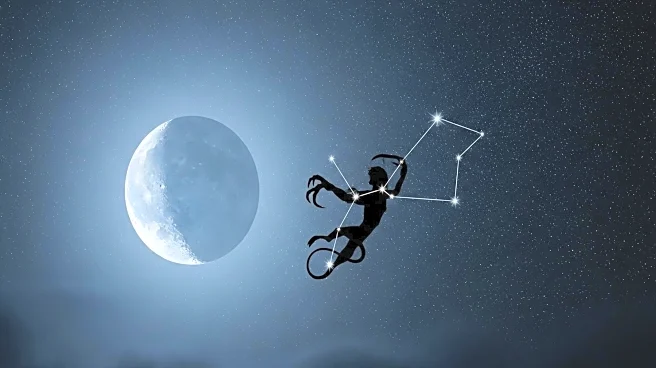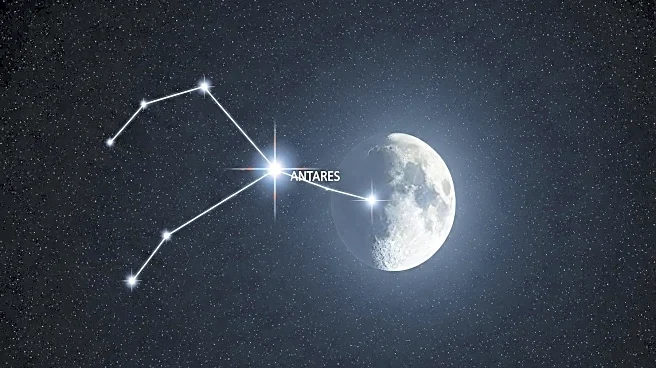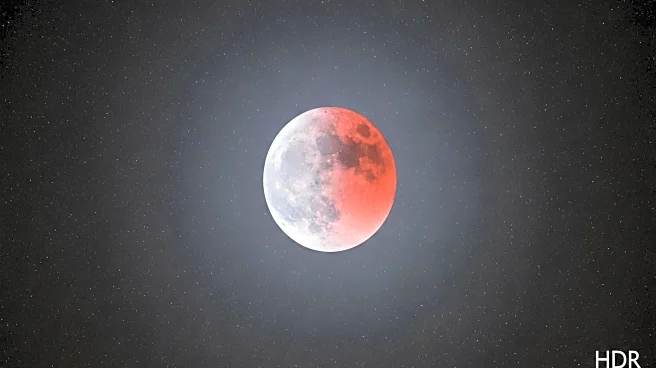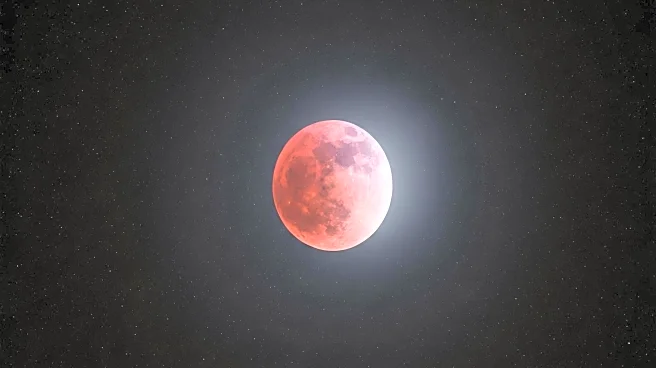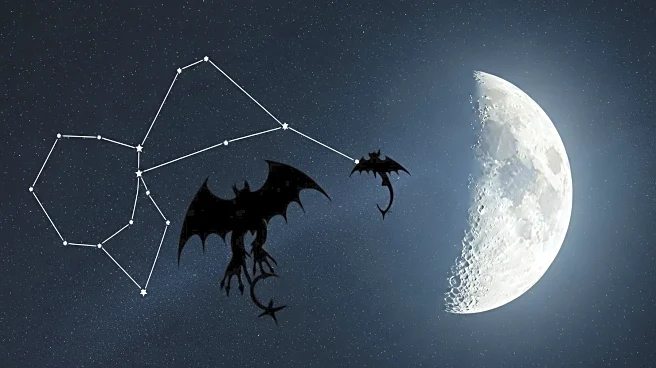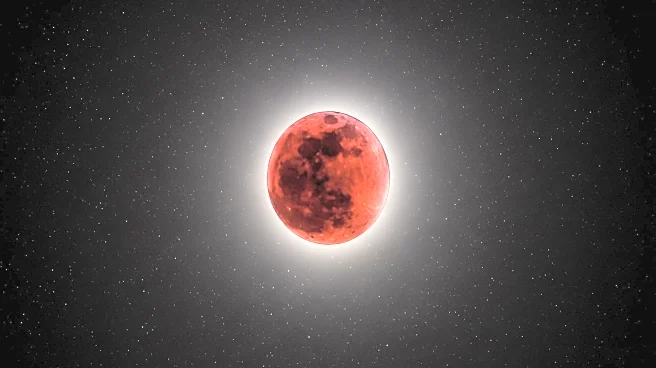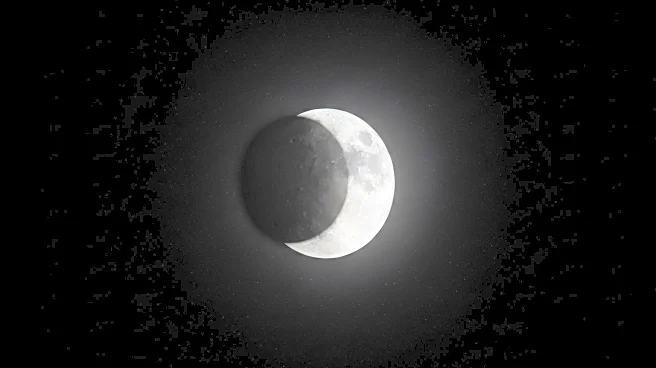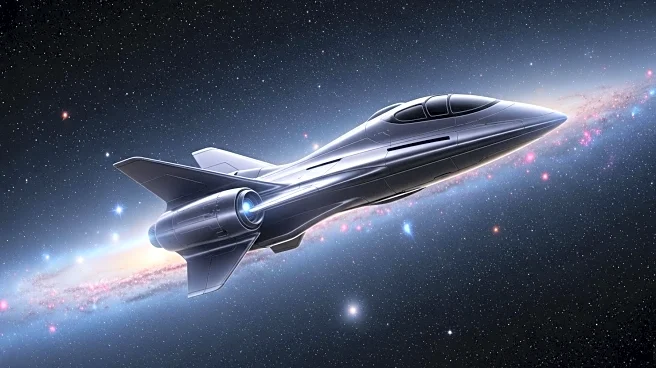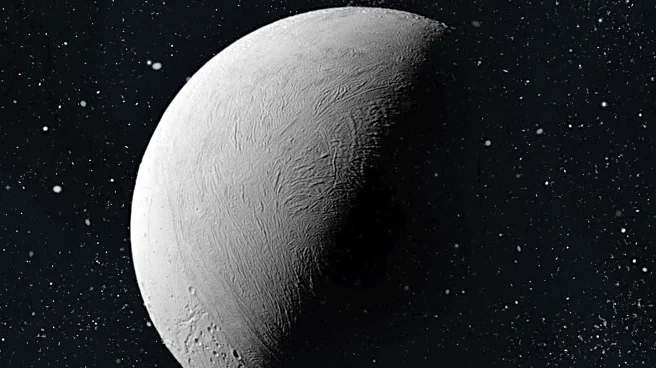What's Happening?
On August 30, the first quarter moon will be visible in the night sky, appearing close to the red supergiant star Antares in the Scorpius constellation. The moon will be half-lit, with the right side illuminated by sunlight and the left side in shadow. This celestial event will be best viewed at sunset, when the moon will be positioned less than 20 degrees above the southwestern horizon. The moon will set approximately three hours after sunset, providing a limited window for observation.
Why It's Important?
The visibility of the first quarter moon alongside the Scorpius constellation offers a unique opportunity for stargazers and astronomy enthusiasts to observe celestial phenomena. This event highlights the intricate movements and alignments of celestial bodies, fostering interest in astronomy and science education. Additionally, such events can inspire cultural and artistic expressions, as the beauty of the night sky often influences creative works. The presence of the moon near Antares also provides a chance to learn more about the Scorpius constellation and its significance in various cultures.
What's Next?
Following the first quarter moon, the next major lunar event will be the full moon on September 7, which will coincide with a total lunar eclipse. This eclipse will transform the moon into a blood moon, visible in parts of the world but not in North America. Stargazers in the U.S. will need to wait until March 2026 for the next total lunar eclipse visible in the region. Meanwhile, astronomy enthusiasts can continue to track lunar phases and other celestial events using telescopes and smartphone apps designed for stargazing.
